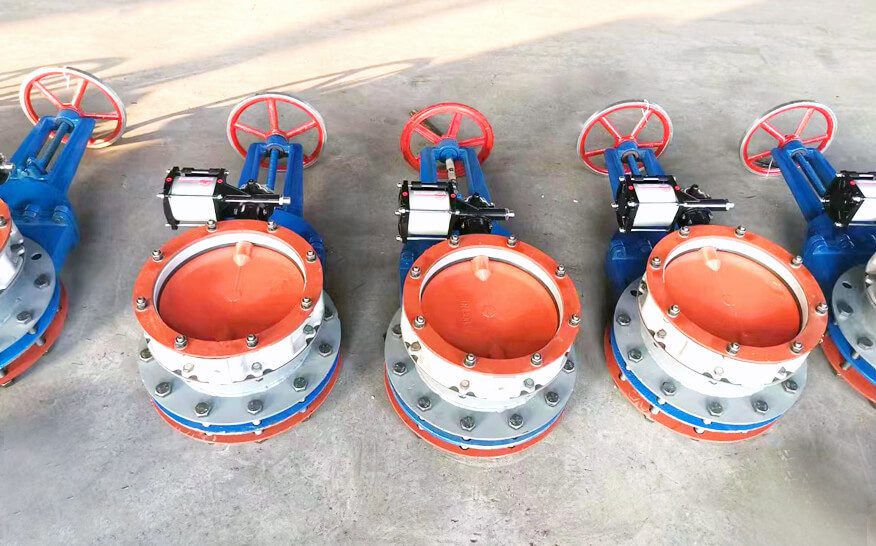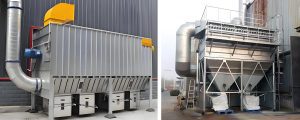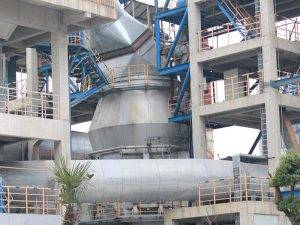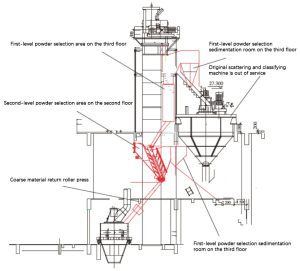Butterfly valves play a crucial role in controlling the flow of various fluids, including air, water, steam, corrosive substances, slurries, oils, liquid metals, and radioactive materials. Specifically, these valves primarily function as shut-off and throttling devices in piping systems. Notably, a butterfly valve features a disc-shaped plate that rotates around its axis within the valve body, which allows for precise opening and closing of the flow.
Structural Characteristics of Butterfly Valves
Butterfly valves have several notable features:
1.Simple Structure: Designed with simplicity in mind, butterfly valves are compact, lightweight, and material-efficient. Furthermore, their small installation size enables quick operation with a 90° rotation, requiring minimal torque. As a result, this design makes them ideal for effective fluid flow control and reliable sealing.
2.Efficient Fluid Handling: In addition, these valves handle slurries effectively while minimizing liquid accumulation at the pipeline entrance. Moreover, they excel in sealing at low pressures and provide excellent throttling performance.
3.Streamlined Design: Therefore, the aerodynamic shape of the disc reduces fluid resistance, making butterfly valves an energy-efficient choice for fluid control.
4.Robust Stem Structure: The through-stem design enhances mechanical properties and corrosion resistance. Furthermore, the stem rotates during operation, preventing any vertical movement that could damage the packing seal. In addition, the stem securely attaches to the disc, ensuring it remains intact in case of failure.
5.Versatile Connection Options: Butterfly valves can be connected via flanged, wafer, butt-welded, or lugged connections. Moreover, they can be actuated manually or using various mechanisms, including worm gear, electric, pneumatic, hydraulic, or electro-hydraulic systems, which allows for remote control and automation.
Classification of Butterfly Valves
Butterfly valves can be classified based on their actuation methods:
1.Electric Butterfly Valves: Electric Butterfly Valves use electric power as the driving force, enabling remote and automated control via electrical signals. They are suitable for applications requiring precise control and long-distance operation. However, their complexity demands regular maintenance of the motor and associated components, and their response time is relatively slow.
2.Pneumatic Butterfly Valves: Utilizing compressed air as the power source, pneumatic butterfly valves respond quickly to control signals. They are best suited for applications where high precision is not critical. Their simpler structure requires minimal maintenance, mainly focusing on the condition of the air supply.
3.Hydraulic Butterfly Valves: These valves operate using hydraulic oil as the power source, converting hydraulic signals into mechanical force to open or close the valve. They thrive in environments with high temperatures, pressures, and corrosive substances, making them perfect for chemical, metallurgy, and petroleum industries.
4.Manual Butterfly Valves: Manual butterfly valves are operated by hand, allowing users to directly control the opening and closing of the disc.

Conclusion
Butterfly valves are efficient solutions for fluid control in various applications. Their simple design, effective sealing, and diverse actuation methods make them indispensable in many industries. As a leading brand, Darko is committed to providing high-quality butterfly valve products to meet various customer needs. By understanding the features and classifications of butterfly valves, you can select the right valve for your specific requirements. If you have any questions or need assistance, please feel free to contact us!





